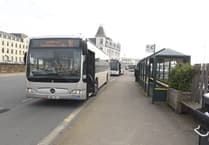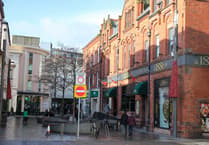Buying a home in the Isle of Man has never been more difficult for first-time buyers.
At the end of last year, the average house price in the Isle of Man was more than £313,000, and the average price of a flat was over £154,000.
But since those figures were compiled, prices have soared as the property market boomed.
On one property website, all bar four houses were priced at over £200,000. On another, only seven were listed as under that threshold.
Several two-bedroom houses are listed at around £250,000, and a three bedroom semi-detached house is around £295,000.
There is even a two-bedroom flat in Ramsey listed at £349, 950.
Despite these prices, the majority of homes listed on these property sites are either ’under offer’ or ’sold: subject to contract’ showing a lack of availability in the more affordable price ranges.
While property prices spiral out of reach for many, there is not a lot of help available for first-time buyers to get on the property ladder.
The Isle of Man Bank this week announced it is offering a fixed-rate mortgage with an interest rate of 0.99% for two years.
That’s provided that borrowers have a 40% deposit available to pay upfront.
This means if a first-time buyer was looking to buy a £200,000 house, they would need a deposit of £80,000 - something vastly out of reach for many young people attempting to get onto the property ladder.
According to figures from the Isle of Man Bank, if first-time buyers sought a mortgage of £200,000 payable over 25 years using this deal, it would initially be on a fixed-rate for two years at 0.99% and then would switch to a variable rate of 3.85% for the remaining 23 years.
Meaning they would be required to pay 24 monthly payments of £752.81 and then 276 payments of £1,014.43.
The total amount payable would be £298,050.12 made up of the loan amount of £200,000 plus interest of £98,050.12.
So what support is actually available as an incentive for young people to return to the island and buy property?
The Independent contacted Isle of Man Bank for comment.
Stuart Chivers, country head, Isle of Man Bank, said: ’At Isle of Man Bank we are always happy to have a meeting with potential mortgage customers to help educate them on what they need to be aware of when buying their first property, considering deposits and additional fees etc, to make that first purchase.
’Our highest Loan to Value product is 90% so that all important deposit is key.
’Our online calculators will allow customers to see what they can borrow in principle.
schemes
’There are also two government schemes in place to support first-time buyers.’
The Department of Infrastructure has two shared equity schemes for first-time buyers which replaced the House Purchase Assistance Scheme 2012 in July 2014.
These schemes provide two distinct pathways for assistance.
The first is ’First Home Fixed’.
It applies to a limited number of new ’approved’ first-time buyer and buy-back properties, which are on developments undertaken by the DoI or private developers, that are allocated directly by the DoI to applicants who are on the register of first-time buyers.
The second is ’First Home Choice’.
It applies to properties bought on the open market, and allows higher levels of income and purchase prices to enable greater flexibility in purchasing properties on the open market.
Access to both schemes is subject to specific eligibility criteria, namely that applicants have never owned a property previously, cannot afford to purchase a suitable property for the first time without government assistance and can provide a minimum deposit of 5% of the purchase price, as a condition of the DoI providing assistance.
A larger eligibility requirement is that applicants must have been resident in the island continuously for the last five years, or resident in the island for 15 years overall, and for at least the last six months.
The assistance provided under both these schemes is in the form of an equity loan, to a maximum of 30% of the purchase price, with which the DoI purchases an equity share of the property.
The applicant must fund as much of the property as possible with the equity loan ’topping up’ any difference between the purchase price and the mortgage, deposit, and any other funds available to the applicant.
The equity loan is held as a charge against the property for the lifetime of the applicant’s ownership.
The loan is interest free for the first two years after which interest becomes payable every year at an initial rate of 1%, increasing each subsequent year by 1% to a maximum equivalent to Bank of England base rate plus 5% (whichever is the lower).
The use of a loan system is used by other governments worldwide, however some schemes established in the past offered more concrete payouts.
For instance, in the UK, first time buyers were able to open ’Help to Buy ISAs’ until November 30, 2019.
Help to Buy ISA was a government scheme designed to help young people save for a mortgage deposit to buy a home.
To qualify you had to be a first-time buyer and not own a property anywhere in the world.
Savings were tax free - just like with any ISA product - but, a Help to Buy ISA gave buyers the added opportunity of earning a government bonus.
Essentially, the government tops up any contributions made by 25%, up to the contribution limit of £12,000.
So, for every £200 the young person saves, the government will contribute £50.
That means that first-time buyers could earn a maximum of £3,000 from the UK government if they saved the full £12,000. The benefit to this scheme was that Help to Buy ISAs were available for each first-time buyer, not each home.
So, if a young person was buying a property with their partner, for example, they would be able to get up to a combined £6,000 towards their deposit.
Even though people cannot now open new Help to Buy ISAs, if someone opened one before the deadline, they can keep saving into it until November 2029, with a further 12 months to claim their government bonus towards their first home.
Young people in the United Kingdom can now apply for a Lifetime ISA instead, which is designed to help people aged between 18 and 40 save up for their first home, or for retirement, and offers a similar government payout.
Devon Watson, councillor for Douglas East, spoke to the Manx Independent about the ’complex problem’ of housing in the island.
When asked about the new interest rate being offered by Isle of Man Bank, Mr Watson said: ’In no way does this actually help ordinary people. It’s essentially a landlord assistance scheme.’
Councillor Watson said: ’The homelessness [and] housing crisis affects a lot of people. Many are in rental accommodation, and want to buy housing but can’t.
’We need a range of solutions.’
He suggested the need for affordable houses in Douglas town centre, including the regeneration of abandoned buildings, increased social housing and private housing, as well as additional funding from government.
Mr Watson described the housing crisis on island as an ’existential problem for the Isle of Man’ which needs to be addressed swiftly and decisively.




